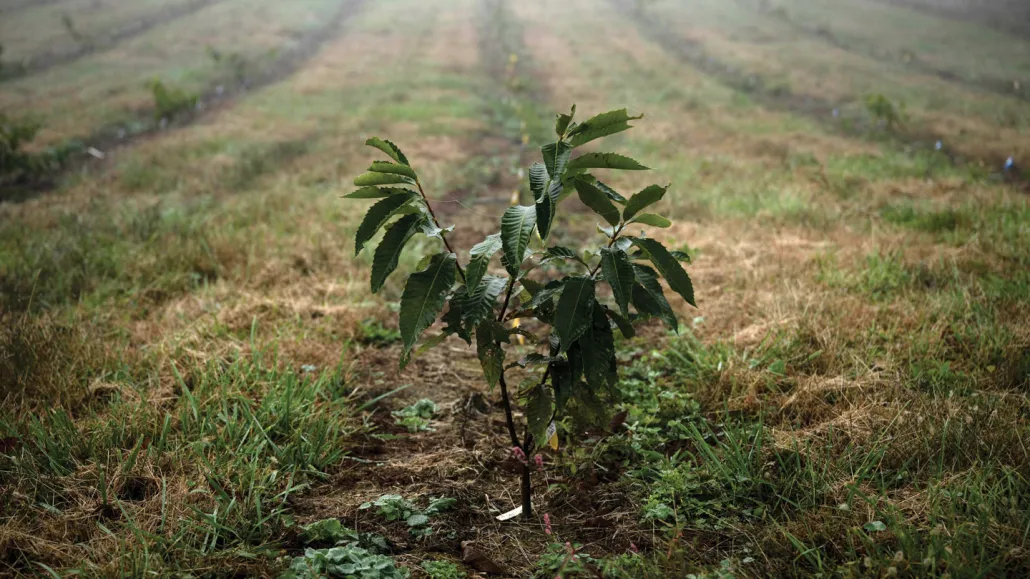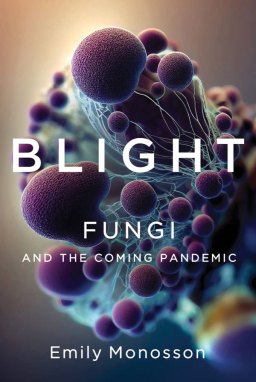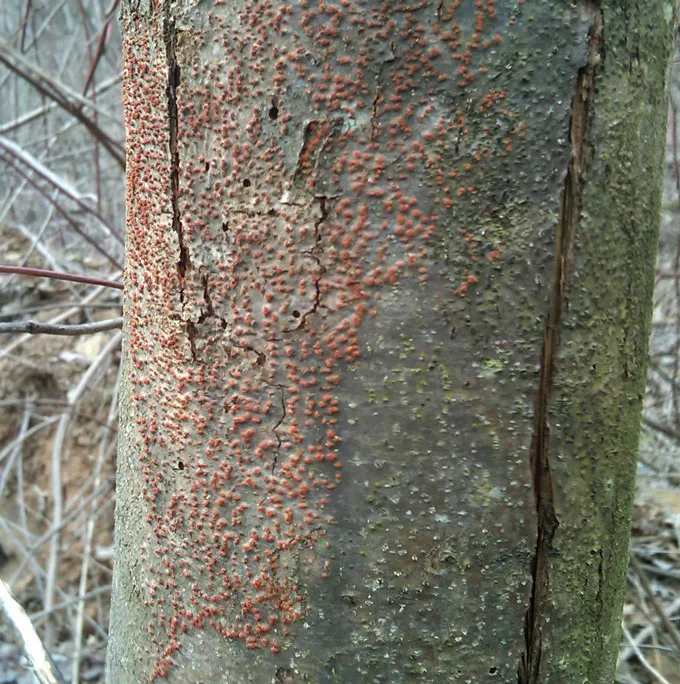‘Blight’ warns that a future pandemic could start with a fungus
The book chronicles an emerging public health threat

A young American chestnut tree grows on a research farm, where scientists are searching for ways to protect the tree against blight.
BRENDAN SMIALOWSKI/AFP VIA GETTY IMAGES
- More than 2 years ago

Blight
Emily Monosson
W.W. Norton & Co., $28.95
In the summer of 1904, American chestnut trees in the Bronx were in trouble. Leaves, normally slender and brilliantly green, were curling at the edges and turning yellow. Some tree limbs and trunks sported rust-colored splotches. By the next summer, almost every chestnut tree in the New York Zoological Park, now the Bronx Zoo, was dead or dying. By around 1940, almost every American chestnut across its native range, the eastern United States, was gone. The trees had been felled by a microscopic fiend: Cryphonectria parasitica, a fungus that causes chestnut blight.
That fungus had been imported on Japanese chestnut trees. Once it arrived on U.S. soil, it spread like wildfire, driving the American chestnut (Castanea dentata) to functional extinction.
Today, some still grow, though only as immature trees popping up from the still-living roots of long-gone trees. But these shoots have no hope of towering over the forest as chestnut trees once did, standing as tall as a nine-story building. Because C. parasitica persists in the environment, the saplings are doomed to die from the moment they sprout.
The fate of the American chestnut is only one example of the devastation fungi can spawn. In her new book, Blight: Fungi and the Coming Pandemic, author Emily Monosson presents an eye-opening, and at times grisly, account of fungal diseases that threaten pine trees, bananas, frogs, bats and, increasingly, people.
Not all fungi are bad. In fact, “most fungi give life,” Monosson explains. By helping to decompose dead organisms, fungi recycle essential nutrients. But as people travel or trade plants and animals around the globe, foreign fungi hitch a ride to places they don’t belong and come into contact with organisms not accustomed to living with them — sometimes with deadly consequences.
Those consequences are the focus of the first half of the book. Monosson kicks off with the topic that might seem most pressing: Do fungi pose a threat to people? Fortunately, humans — and other mammals — run too hot for most fungi. “Our bodies are like Death Valley,” Monosson writes. An internal temperature of 98.6° Fahrenheit (37° Celsius) is white-hot for organisms that prefer 54° to 86° F (12° to 30° C).
What’s more, our immune systems are quite adept at fending off potential fungal foes. So while people who are immunocompromised are at higher risk for fungal infections, serious cases are relatively uncommon compared with other infectious diseases.
But climate change could push fungi to adapt to higher temperatures. Monosson highlights Candida auris, which evolved in the last decade or so to infect people and is spreading fast in health care facilities (SN: 4/22/23, p. 5). Other fungal infections in people, such as valley fever, might also spread to new places alongside higher temperatures (SN: 12/4/21, p. 16).
Fungal pandemics in other species offer lessons for how devastating fungal diseases can be. Monosson describes these outbreaks in morbid detail.

Fusarium wilt strangles the plants that provide the world with yellow bananas. Carcasses of bats, starved to death by Pseudogymnoascus destructans, the cause of white nose syndrome, litter caves across the United States (SN Online: 7/15/19). Researchers studying frogs in Central America and elsewhere watch in horror as populations dwindle and disappear, suffocated by Batrachochytrium dendrobatidis, or chytrid.
At this point in the book, I felt hopeless. Perhaps HBO’s hit series The Last of Us is a real glimpse into the future (SN Online: /21/23). But never fear, evolution can step in and provide “glimmers of hope,” Monosson writes. Affected plants and animals can adapt to better handle fungal foes. (Contrary to what Monosson says, however, pathogens don’t evolve for their own good in ways that make them more benevolent to their hosts. They change in ways that ensure spread.)
A handful of frog populations flattened by chytrid are appearing again (SN: 12/3/22, p. 6). In Yosemite National Park, frogs infected with the fungus show no sign of disease. Trees may be building resistance too. Some whitebark pine trees (Pinus albicaulis) in the western United States have genes that render them resistant to white pine blister rust, a disease that has been afflicting the trees for more than a century.
People are also stepping in to help. And given our role in spreading fungal diseases, maybe we have an obligation to, Monosson argues. Fattening up bats in the fall, for example, could help them survive white nose syndrome, which robs the animals of fat stores during winter hibernation. Some researchers are even looking to natural resistance to find solutions, including efforts to resurrect American chestnuts (SN: 5/3/03, p. 282). Botanists hope that by genetically altering the trees, “someday the chestnut may rise again, taking its place among the oak and hemlock,” Monosson writes.
For now, the best hope may be preventing fungal diseases in the first place. “When humans first began moving animals and plants, cut forests, expanded agricultural lands, there was no thought to planetary protection,” Monosson writes. “Now we know better.”
Buy Blight from Bookshop.org. Science News is a Bookshop.org affiliate and will earn a commission on purchases made from links in this article.







